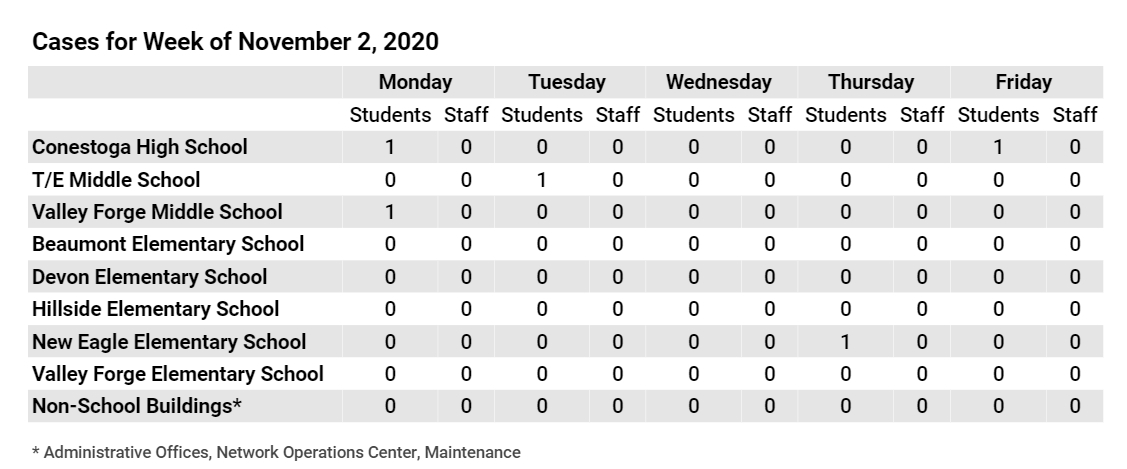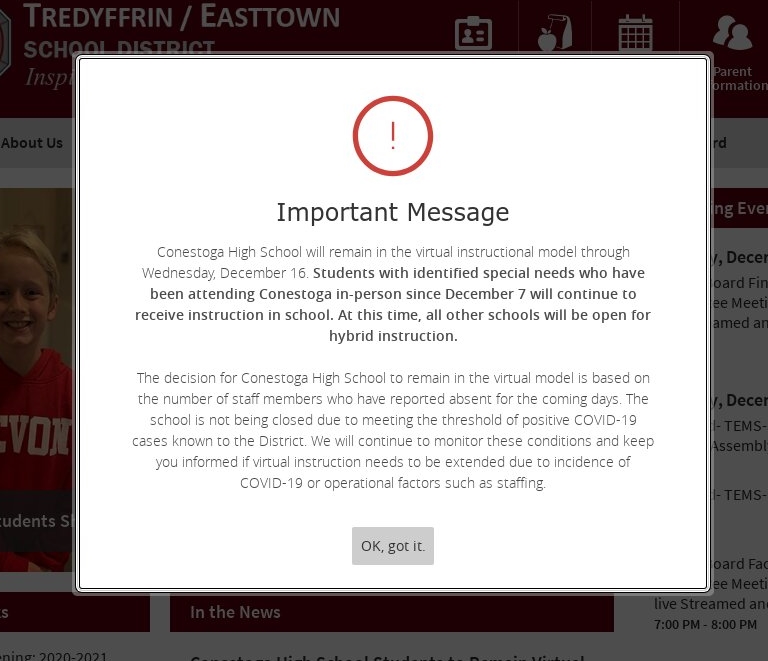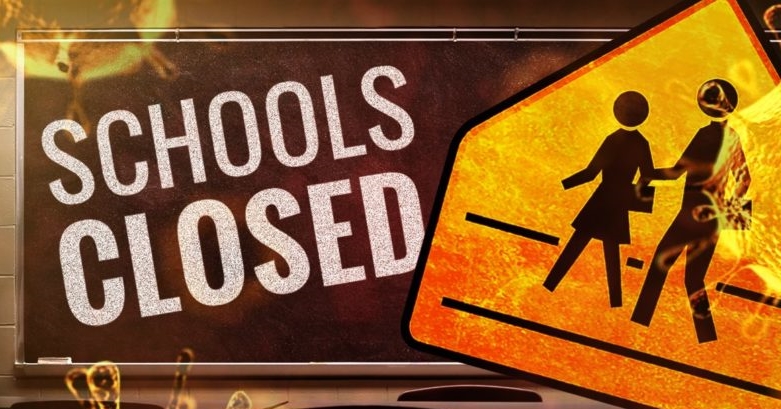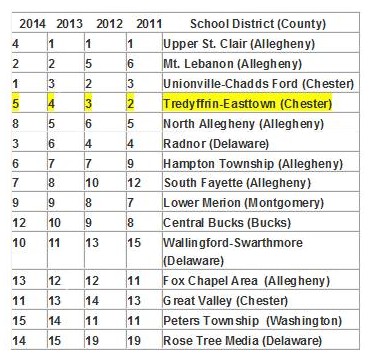 With the 2020 election last week and then the wait for the results, I purposefully delayed this post.
With the 2020 election last week and then the wait for the results, I purposefully delayed this post.
The news on Covid-19 cases is not good — the Pennsylvania Department of Health reported a one-day record of 4,035 new positive coronavirus cases on Saturday. That number more than doubled the springtime high. Since Covid began, at least 9,015 people in Pennsylvania have died from the coronavirus with new deaths reported daily. Cases are continuing to rise across Pennsylvania, with concern that the pandemic is going to get worse before it gets better as we enter the colder months.
There is some encouraging news out this morning from Pfizer indicating their vaccine against Covid-19 is strongly effective and exceeding expectations – the early trial results showing an effective rate of 90 percent in preventing infection! Such good news!!
Not to take anything away from the encouraging Covid-19 vaccine news from Pfizer, but … until the vaccine is readily available, the pandemic continues and coronavirus cases surge. In fact, multiple school districts in southwestern Pennsylvania have closed schools as more students and staff became infected.
In our District, a staggered reopening began on October 12 with a hybrid in-person option as well as continued virtual learning.
The table below is the latest weekly snapshot of Covid-19 cases in the T/E School District. Each week the District updates the information. The chart indicates that for the week ending November 6, the District reported 2 new cases at Conestoga High School, 1 new case at T/E Middle School, 1 new case at Valley Forge Middle School and 1 new case at New Eagle Elementary School. No new Covid-19 cases reported from the District staff for the week.

At the end of each week, the District updates its dashboard for new Covid-19 cases (students and staff). To review the results, click here.
A few days before last week’s election, I received an anonymous email in regards to the Covid-19 health crisis from a member of the T/E staff, which was both unsettling and concerning. Before posting the remarks, I asked the writer to call me to verify. We had a lengthy conversation and the teacher from one of our elementary schools wants her observations to be made public.
Not wishing to add to the heightened anxiety surrounding the presidential election, I purposely held off posting the teacher’s remarks (below) until now. The elementary school teacher was careful to point out to me, that the comments are representative of her school only – and further, she has no information about the District’s handling of the pandemic at the other elementary schools, the middle schools or the high school.
Hi Pattye!
I work at a school in the district, and I’ve been holding off reaching out to you, but I can’t anymore. I’m scared for my health. I’m scared for our students. I’m scared for my family after being exposed all day at work.
In my school, I have frequently seen teachers walk around with just a face shield and no mask — this is approved by the district, but the shields are open on the sides and top and can easily allow transmission to happen.
I’ve heard teachers say covid isn’t real and keep their masks off even when other staff or students are present — this is not allowed and administration is aware — yet nothing changes.
I’ve seen support staff huddled up together talking with their masks off. I have seen staff not following social distancing guidelines.
Wednesdays are supposed to be a day for deep cleaning to take place, yet the room for 4/5 days a week students from all different grades and classes is not being cleaned. The staff is wiping down desks themselves because no one comes in to clean them. The only things that I have seen being cleaned are doorknobs and light switches — which while appreciated, don’t account for the numerous other areas students touch daily.
I’ve seen specials teachers handing out shared materials. I have seen students not following social distancing guidelines with teachers nearby — but the teachers don’t correct them.
It’s overwhelming. There are students coughing and sneezing, but if they don’t have a fever they aren’t sent home.
There are staff that have symptoms that are told to stay home (yet no cases are being reported on the dashboard run by Chris Groppe). We have had numerous cases where support staff has been out with symptoms or due to exposure, yet the students they work with are still allowed to come to school.
We had a situation where a staff member was exposed and had to be tested, yet none of the staff who were exposed to that person were ever notified. I feel like we are being misled by administration.
Everyone says we’re safe — but we have several students out this week (some who have parents who communicated the student’s symptoms) yet there’s no word on whether the students will be required to be tested before they return to school.
I honestly feel like TESD has no desire to notify people who are exposed unless there is a positive test — and at that point, it may be too late. I really feel like the community and parents need to be aware of what is going on here.
I am beyond shocked that the schools have been able to remain open as long as they have, but I honestly believe it’s because the district isn’t being honest about possible cases/exposure.
Signed,
Let Down in T/E School District
Based on my discussion with the District teacher, it appears that the policy/protocol around the students who exhibit symptoms of Covid – such as cough, sore throat, runny nose, fever, etc. and when they can return to school, are vague and need to improve. The teacher is concerned that the administration is not providing accurate information on other staff and on covid testing results. It’s worth repeating, these observations are from a District teacher in one elementary school and may not be representative of all the schools.
I asked the teacher how staff reporting of Covid policy breaches was handled – I learned that the staff is free to report any breaches to the school principal. However, the teacher said that she (and others) were uncomfortable with the reporting policy, preferring anonymity. I wonder if there be a way for staff to report anonymously – maybe utilizing a locked comment box?
Without question, the ongoing health crisis is difficult for all — the parents, students, teachers and administration. Families are challenged as they make educational choices for their children during the pandemic. And with Covid-19 cases on the rise, those decisions are all the more important.

 As COVID-19 continues to surge across the nation and right here in southeastern Pennsylvania, school districts are returning to remote learning. Today we learned that the largest public school district in the country, New York City (1.1 million students and 1,800 schools) is returning to virtual learning effective tomorrow, November 19. It is unclear when the NYC students will be able to return to in-person learning.
As COVID-19 continues to surge across the nation and right here in southeastern Pennsylvania, school districts are returning to remote learning. Today we learned that the largest public school district in the country, New York City (1.1 million students and 1,800 schools) is returning to virtual learning effective tomorrow, November 19. It is unclear when the NYC students will be able to return to in-person learning. With the 2020 election last week and then the wait for the results, I purposefully delayed this post.
With the 2020 election last week and then the wait for the results, I purposefully delayed this post.
 Started in 2017, the “Sunrise Movement” is a national grass-roots movement of young people uniting to stop the climate crisis. The nonprofit , which has become known for its New Green Deal proposal, describes its mission as “building an army of young people to make climate change an urgent priority across America, end the corrupting influence of fossil fuel executives on our politics, and elect leaders who stand up for the health and wellbeing of all people.”
Started in 2017, the “Sunrise Movement” is a national grass-roots movement of young people uniting to stop the climate crisis. The nonprofit , which has become known for its New Green Deal proposal, describes its mission as “building an army of young people to make climate change an urgent priority across America, end the corrupting influence of fossil fuel executives on our politics, and elect leaders who stand up for the health and wellbeing of all people.”

 Do you recall the 2017 federal lawsuit filed against T/E School District and Dr. Amy Meisinger, principal of Conestoga High School?
Do you recall the 2017 federal lawsuit filed against T/E School District and Dr. Amy Meisinger, principal of Conestoga High School? Like many school districts in America, the T/E School District started the 2020-21 school year virtually. No one thinks virtual classrooms are as good as the real thing, but they were a necessity to fight the pandemic. In the stressful era of Covid-19, the re-imagining of education is no easy task for students, parents or teachers.
Like many school districts in America, the T/E School District started the 2020-21 school year virtually. No one thinks virtual classrooms are as good as the real thing, but they were a necessity to fight the pandemic. In the stressful era of Covid-19, the re-imagining of education is no easy task for students, parents or teachers. Spring is PSSA time for public schools in Pennsylvania and the results for 2014 as reported in the
Spring is PSSA time for public schools in Pennsylvania and the results for 2014 as reported in the 